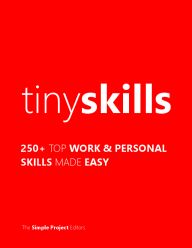From brainstorming and setup to adding interactive features and finalizing your creation. Whether it’s for an Obby, RPG, or Tycoon, this guide will help you create an engaging game environment.
1. Planning Your Roblox Map
Before you jump into Roblox Studio, take a moment to plan your game map.
Step 1: Choose Your Map Type
- Obby (Obstacle Course): Platforms, jumps, kill bricks, and checkpoints.
- RPG Adventure: Villages, dungeons, forests, and NPCs.
- Tycoon: Flat map with designated building zones and player bases.
- Simulation Game: Open area with interactive objects (e.g., pets, shops).
Step 2: Sketch or Outline Your Map
- Sketch Ideas: Use paper or a tool like Figma to map out key areas.
- Example for a city: Spawn area Shops Park PvP Arena.
- Consider Gameplay Flow: Ensure players move logically from one area to another.
- Example: In an Obby, create a clear progression of difficulty.
2. Setting Up Your Map in Roblox Studio
Step 1: Open Roblox Studio
- Choose a Template:
- Select a template based on your game type (e.g., Obby, Baseplate).
- Save Your Project:
- Go to File Save to Roblox As to ensure your progress is backed up.
Step 2: Terrain and Environment
Step 3: Add Parts and Models
3. Enhancing Your Map with Features
Step 1: Adding Interactive Elements
- Spawn Points:
- Insert a SpawnLocation from the Model tab.
-
Add multiple spawn points if your game has different areas or teams.
-
Kill Bricks:
-
Use Lua scripting to create a kill brick:
lua
local brick = script.Parent
brick.Touched:Connect(function(hit)
local character = hit.Parent:FindFirstChild("Humanoid")
if character then
character.Health = 0
end
end)
-
Checkpoints (For Obbies):
- Add a SpawnLocation and change its properties:
- Set AllowTeamChangeOnTouch to true.
- Create a team for each checkpoint under Teams.
Step 2: Adding NPCs
- Humanoids (Basic NPCs):
- Insert a Model and add a Humanoid object.
-
Customize the NPC’s appearance with Parts (e.g., a head and body).
-
Interactive NPC Script (Dialog):
lua
local dialog = Instance.new("Dialog")
dialog.Parent = script.Parent
dialog.InitialPrompt = "Welcome to the village!"
dialog.Purpose = Enum.DialogPurpose.Quest
-
Enemy NPCs:
- Use free models or create a script that makes NPCs attack players.
- Example: Add a script that reduces player health when touched.
Step 3: Adding Collectibles
- Coins or Gems:
-
Add a Part, resize it to look like a coin, and add a script:
lua
local part = script.Parent
part.Touched:Connect(function(hit)
local player = game.Players:GetPlayerFromCharacter(hit.Parent)
if player then
player.leaderstats.Coins.Value = player.leaderstats.Coins.Value + 1
part:Destroy()
end
end)
-
Treasure Chests:
- Use a model of a chest that gives rewards (e.g., items or currency) when clicked.
4. Finalizing Your Map
Once your map is built, polish it for a smooth player experience.
Step 1: Test Your Game
- Playtest in Studio:
- Click Play to test movement, interactions, and scripts.
- Check Spawn Points:
- Ensure players spawn in the correct area.
- Debug Scripts:
- Use the Output window to troubleshoot errors.
Step 2: Optimize Your Map
- Reduce Lag:
- Avoid using too many unoptimized free models or excessive parts.
- Use Unions to combine multiple parts into one.
- Pathfinding:
- Ensure there’s a clear path for players to follow in your map.
Step 3: Publish Your Game
- Save to Roblox:
- Go to File Publish to Roblox As and select/create a game slot.
- Game Settings:
- Set your game to Public to allow others to play.
- Add a description, thumbnails, and tags to attract players.
5. Pro Tips for Building a Great Map
- Focus on Immersion:
-
Add small details like foliage, signs, or hidden Easter eggs to make your map come alive.
-
Balance Difficulty:
-
If it’s an Obby, ensure jumps and obstacles are fair for players.
-
Learn Advanced Scripting:
-
Create unique mechanics like teleporters, weather changes, or custom UI.
-
Take Inspiration from Popular Games:
- Explore Roblox hits like Tower of Hell, Murder Mystery 2, or Pet Simulator X for ideas.
Next: Read 2500+ consumer guides to shopping, electronics, appliances, home services, cars, money and more.

